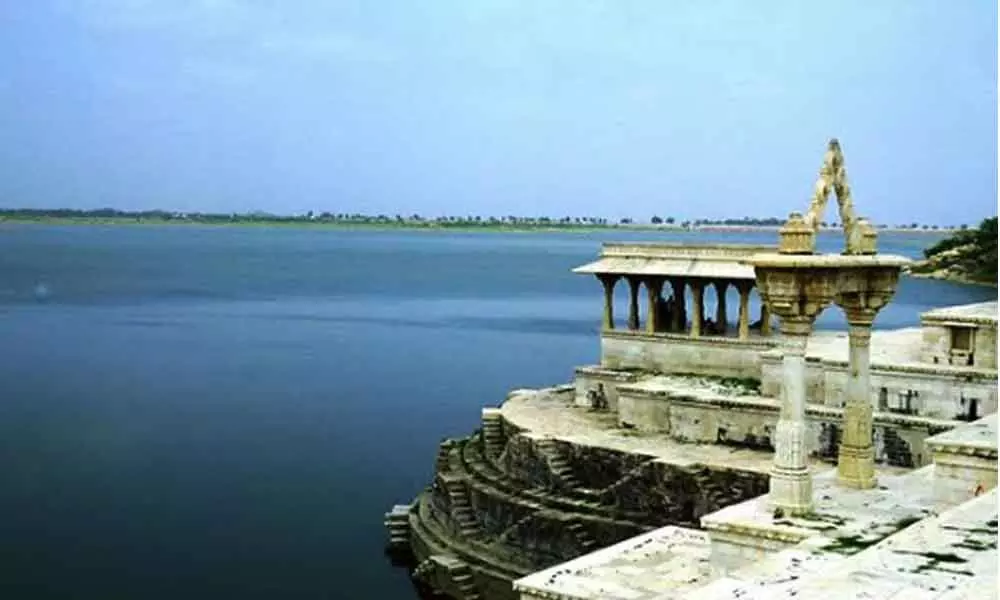Live
- Jhansi says she will focus on holistic development of Vizag
- What Sam advocated
- Congress swings into damage control
- Pitroda's inheritance tax remarks fuel fresh attack
- Dharmavaram: A mastermind that played a spoilsport for TDP rivals
- KCR launches poll bus yatra
- Revanth dares KCR, Harish
- Modi frustrated, afraid of invisible voters: Kharge
- SC seeks clarification from EC on functioning of EVMs
- Vijayawada: ‘People disgusted with YSRCP govt, seek change’
Just In
Water Management: Tale of two historic cities


Water Management: Tale of two historic cities
The theme for World Environment Day 2020 focuses of nature. In this context we look at the water resources, and the need to conserve rainwater in cities like Hyderabad. The city of the Nizams, with its extensive network of natural and man-made lakes, constructed under the aegis of the visionary rulers, for the purpose of water conservation, has failed to save its lakes. Rapid urbanization, encroachment, etc., were the reasons many lakes shrunk in size and the various nalas made for the exclusive purpose of taking the excess rain water into these lakes are often blocked leading to the much familiar sight of flooding in various areas during the monsoons. Good rains or no, Hyderabad has failed to store rainwater for a sunny day and usually good monsoon is followed by water scarcity, whereas it was exclusively for this purpose structures like Miralam Tank were constructed.
Flooded streets of Hyderabad
Looking back into history, areas like Rethibowli, Enginebowli, Doodhbowli, Gachibowli were named after the wells that these places had. The writer in her childhood remembers seeing the bowlis, big and small in several areas around the city that slowly vanished with time like the rocks of Hyderabad. Since it was a rocky terrain the city depended on natural resources like rainwater and groundwater for a long time. The many step wells and the tens of lakes built, many after the Musi floods stand testimony to the visionary water conservation initiatives of the erstwhile rulers. Himayatsagar, Hussainsagar, Osman sagar, Durgamcheruvu, Nizam sagar, Shamirpet…the list goes on. While the bowlis were rendered dysfunctional many decades ago; the lakes are gradually following the same path. There is an urgent need to revive the defunct nalas and protect the lakes; which will majorly address the seasonal problem of water flooding the roads during monsoons. And by conserving this water, and replenishing groundwater, one can effectively address water scarcity as well.
Osmansagar
Yet another heritage city where the rulers that adopted torch bearing water conservation initiatives is Udaipur, which like Hyderabad is defined by its lakes. The city of Udaipur in Southern Rajasthan has evolved a network of eight man-made lakes, Doodh Talai, Pichola, Kumharia Talab, Fateh Sagar, Goverdhan Sagar, Rang Sagar, Swaroop Sagar, and Amarkund since 14th Century. All the eight lakes are interlinked to each other.
Fateh Sagar Lake, Udaipur
The Connaught dam, also known as Fateh Sagar dam was built on Ahar river during the time of Maharana Fateh Singh. A feeder canal called Chikalwas was constructed to divert the surplus rainwater of Ahar river towards the Devali Talab. And just like in many cities, the 200-year-old Talab/lake had seen neglect and destruction. But the centuries-old lake is now being renovated.
"The entire project is referred to as the world's first river-linking project. It's a unique example of water conservation and management," says Dr Narpat Singh Rathore, former professor of Geography, ML Sukhadia University, Udaipur.
The construction of Connaught Dam in 1890 assumes significance in the face of highly erratic and uncertain rainfall every year. "Erratic rainfall is only one of the challenges we face in the 21st century," he adds. "Explosive population growth, the encroachment of lakes-beds, and rapid urbanization have compounded the problems that a heritage city like Udaipur faces, year after year."
Saving lakes acquires significance in the modern context when sustainability and protecting natural resources gain importance. Measures to save lakes need to be taken through water conservation techniques and the construction of new link channels.

© 2024 Hyderabad Media House Limited/The Hans India. All rights reserved. Powered by hocalwire.com






